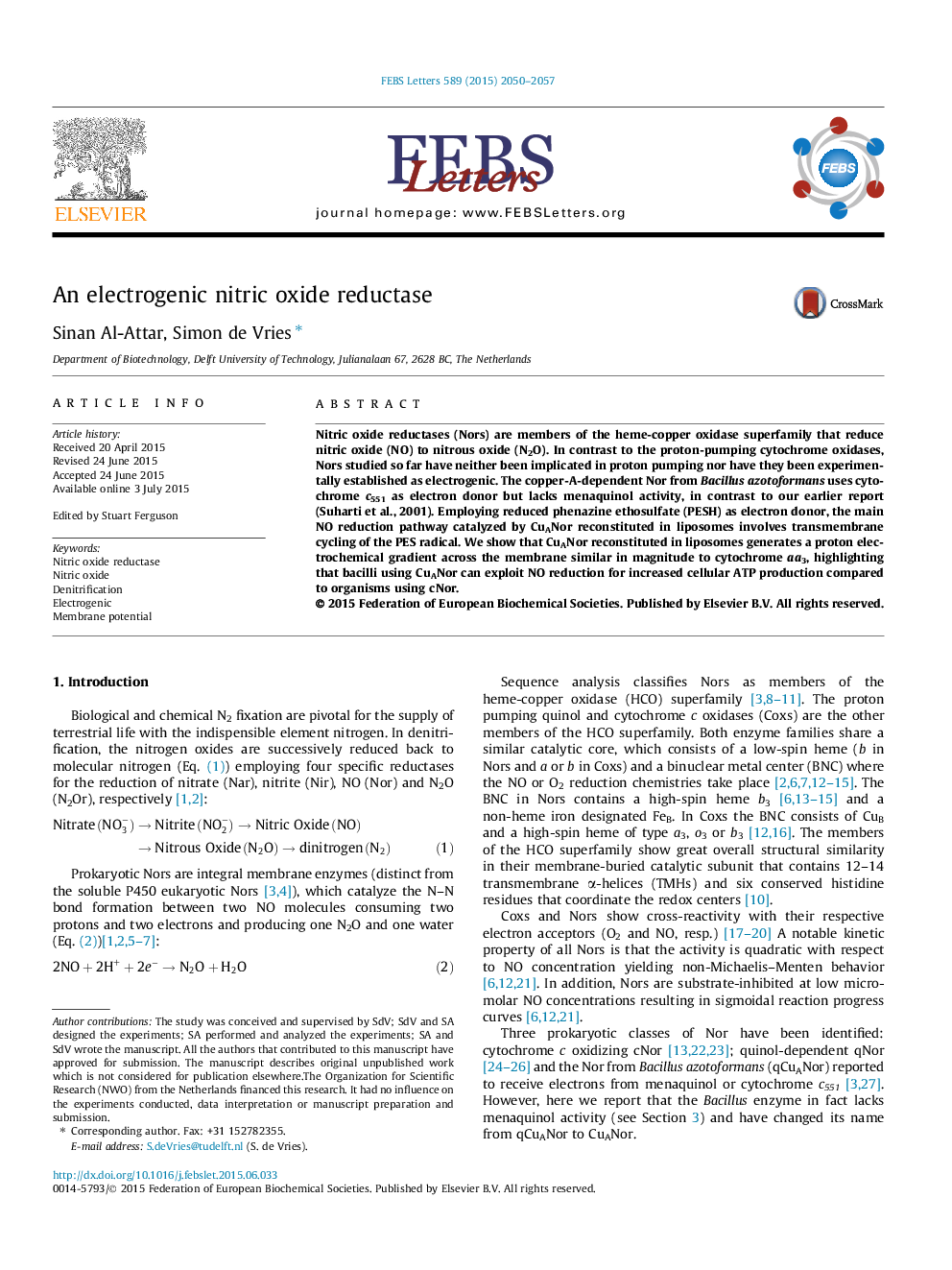| Article ID | Journal | Published Year | Pages | File Type |
|---|---|---|---|---|
| 2047475 | FEBS Letters | 2015 | 8 Pages |
•The Nor from Bacillus azotoformans lacks menaquinol activity and its name, qCuANor, has now changed to CuANor.•CuANor is structurally homologous to Type B (cytochrome ba3) oxidases.•Nitric oxide reduction by CuANor from Bacillus azotoformans is electrogenic.•The first evidence that one type of NO reductase directly generates a proton-motive force.
Nitric oxide reductases (Nors) are members of the heme-copper oxidase superfamily that reduce nitric oxide (NO) to nitrous oxide (N2O). In contrast to the proton-pumping cytochrome oxidases, Nors studied so far have neither been implicated in proton pumping nor have they been experimentally established as electrogenic. The copper-A-dependent Nor from Bacillus azotoformans uses cytochrome c551 as electron donor but lacks menaquinol activity, in contrast to our earlier report (Suharti et al., 2001). Employing reduced phenazine ethosulfate (PESH) as electron donor, the main NO reduction pathway catalyzed by CuANor reconstituted in liposomes involves transmembrane cycling of the PES radical. We show that CuANor reconstituted in liposomes generates a proton electrochemical gradient across the membrane similar in magnitude to cytochrome aa3, highlighting that bacilli using CuANor can exploit NO reduction for increased cellular ATP production compared to organisms using cNor.
